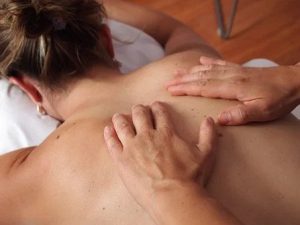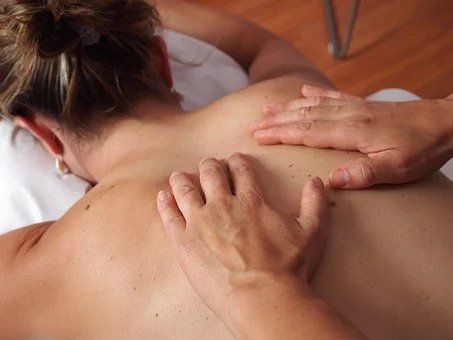Myofascial release therapy has many benefits in regards to one’s quality of life. If you engage in myofascial release therapy, then you will notice improvements to your mobility as well as your fitness levels.
The human body has numerous pressure points. Myofascial release therapy is designed to target specific pressure points on the body in order to alleviate pain. The trigger points are kneaded in a gentle manner by a physical therapist. Flexibility and comfort levels will be maximized and restored in order to provide pain relief.
Here, we will focus on myofascial release therapy and how it can be used to improve your body posture. Poor body posture has been linked to many health problems, including lower back pain and sciatica.
What is fascia?
Fascia is a form of connective tissue that is found in the body. Soft tissue, organs, bones, and human muscles are all held together by fascia, which is essential to one’s well-being. What is interesting about fascia is that it is part of a continuous tissue system.
If your foot suffers trauma, then other parts of your body will also be negatively affected by the injury. Fascia will adapt to new postural patterns that are adopted by the body tissues in order to defend themselves after an injury has been sustained.
How does myofascial release massage differ from other massages?
A typical massage will involve kneading and stroking movements by the physical therapist. Lubricants are frequently used so that the physiotherapist can easily glide their hands over the skin of the patient or client.
Myofascial release is different, in the sense that the pressure applied is sustained. Also, specific areas of connective tissue (known as fascia) are actually targeted by the highly skilled physiotherapist.
The fascia surrounds the bones and muscles of the patient, and the sustained and targeted pressure employed will help relieve pain. There are many myofascial release treatment benefits, as we shall see below.

The Benefits of Myofascial Release Massage
Patients who suffer from myofascial pain syndrome will benefit from myofascial release massage. Those who suffer from chronic headaches or migraines may also benefit from a myofascial release massage.
The therapist may target tightened muscles around the head and neck of the patient in order to help relieve chronic headaches. The massage is gentle, however, so patients will not feel any pain, and any discomfort that they experience will be minimal.
Venous insufficiency is also a condition that can cause serious problems for some patients. Venous insufficiency occurs when blood in the body pools in the innermost veins in the leg. Fortunately, a myofascial release massage may help sufferers obtain the relief that they need and deserve. Left untreated, the blood will stretch and damage the veins in the legs.
Most patients with pronounced venous insufficiency report an aching pain in the leg that is impacted. Venous insufficiency may make it difficult to perform physical activities, such as jogging or running, and even walking may prove difficult in severe cases.
Venous insufficiency may be treated using myofascial release massage alone, or it may be used in conjunction with other treatment modalities in order to treat the condition. In addition to reducing pain, trigger and knot points will be released via myofascial release massage.
Movement and flexibility will also be improved when myofascial release massage is practiced or performed on a regular basis. Most patients who undergo myofascial release massage report improvements in their muscle functionality as well.
As people age, they may develop issues pertaining to blood flow restriction. Regular exercise and a healthy and balanced diet that is low in sodium and sugar may help reduce the risk of blood flow problems in the future. However, if you already suffer from blood flow restriction problems, then your doctor may refer you to a physiotherapist who performs myofascial release massage.
Circulation is enhanced via myofascial release massage, as tight areas that suffer from blood flow restriction are actually broken up. Any soreness that is related to exercise may also be reduced after having undergone a myofascial release massage.
How it Improves Body Posture
Perfect massages are designed to help aid the posture of patients and clients. Healthy posture techniques should be practiced regularly with your trainer. They will help you work with your spine so that your range of motion will be improved. Any back pain that you are experiencing, whether it be chronic or acute, will also be alleviated or eliminated via a myofascial release massage.
Your physiotherapist will provide you with educational tools that will teach you how to master the proper posture. The tools will also teach you some safe movement patterns and techniques that will help relieve pain in the event that you are injured in the future.
Poor body posture can cause serious problems as you age. Your physiotherapist will provide a customized treatment plan for you in order to optimize your body posture per your unique needs and limitations.
Enjoy Life Again
Myofascial approaches, such as deep tissue release massage, are designed to help patients that are suffering from a wide array of symptoms and conditions. Loss of mobility and chronic pain will be treated using a gentle, hands-on approach. The pressure that is enforced is continuous but gentle, so that the patient will not experience any pain or discomfort.
The fascial connective tissues in the body are targeted by the physiotherapist in order to provide long-term relief. After the deep massage has been completed, you will notice drastic improvements in your posture. You will also notice significant pain relief that will allow you to enjoy all of the activities that you used to prior to your accident or medical diagnosis.
If you are dealing with pain or loss of mobility issues, then please make an appointment with a physiotherapist in your area. You may also speak to your doctor so that they may refer you to a myofascial release massage therapist in your neighbourhood.








